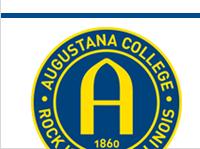Document Type
Student Paper
Publication Date
Spring 5-16-2022
Disciplines
Geographic Information Sciences | Geography | Geology
Description, Abstract, or Artist's Statement
The Northern Range, Trinidad underwent deformation due to oblique collision of Caribbean plate with northern South America, which was then followed by transform plate motion. Deformation began in the late Miocene when sedimentary protoliths were ductility deformed and metamorphosed to greenschist facies; this event and subsequent transform deformation drove exhumation of these rocks to the surface and created their high topography. This project provides constraints of the structural history of the western Northern Range where bedrock mapping and structural analyses are most complete. Initial geologic mapping of Northern Range, which continued from the 1950s,1960s, and 1990s, focused on attempting to establish and map a protolith stratigraphy. Our new approach has been to simply map the observed metamorphic rock types. We supplement our new map with abundant mesoscopic structural fabric measurements collected from roadcut, streambed, and quarry exposures. We synthesized the new map and all structural data into a GIS geodatabase. The data were used to construct cross-sections and stereonets along a continuous N-S transect across the entire western Northern Range. Our analyses highlight three major phases of deformation in the western Northern Range. D1 (Early Miocene) produced a S1 foliation that completely transposed the original stratigraphy and dips south at an azimuth between 150-220°. D2 folded S1 into asymmetric trains of south-verging m- to dm-scale mesoscopic folds. D3 produced conjugate sets of NE-SW- and NW-SE-trending f3 folds. The timing of D2 is not well constrained. D3 is probably associated with Pliocene extension related to the local development of pull-apart basins. Our cross-section highlights: 1) range front domains of upright NW-SE trending folds, and 2) the range-bounding Arima Fault zone, a ~100m wide zone of young, but inactive (Plio-Pleistocene), ~E-W trending, sub-vertical (both N- and S-dipping), predominantly dip-slip, normal sense, faulting.
Augustana Digital Commons Citation
Clark, Abigail Faye. "Structural Geology and Cenozoic Deformation: Western Northern Range, Trinidad" (2022). Geology: Student Scholarship & Creative Works.
https://digitalcommons.augustana.edu/geolstudent/7
